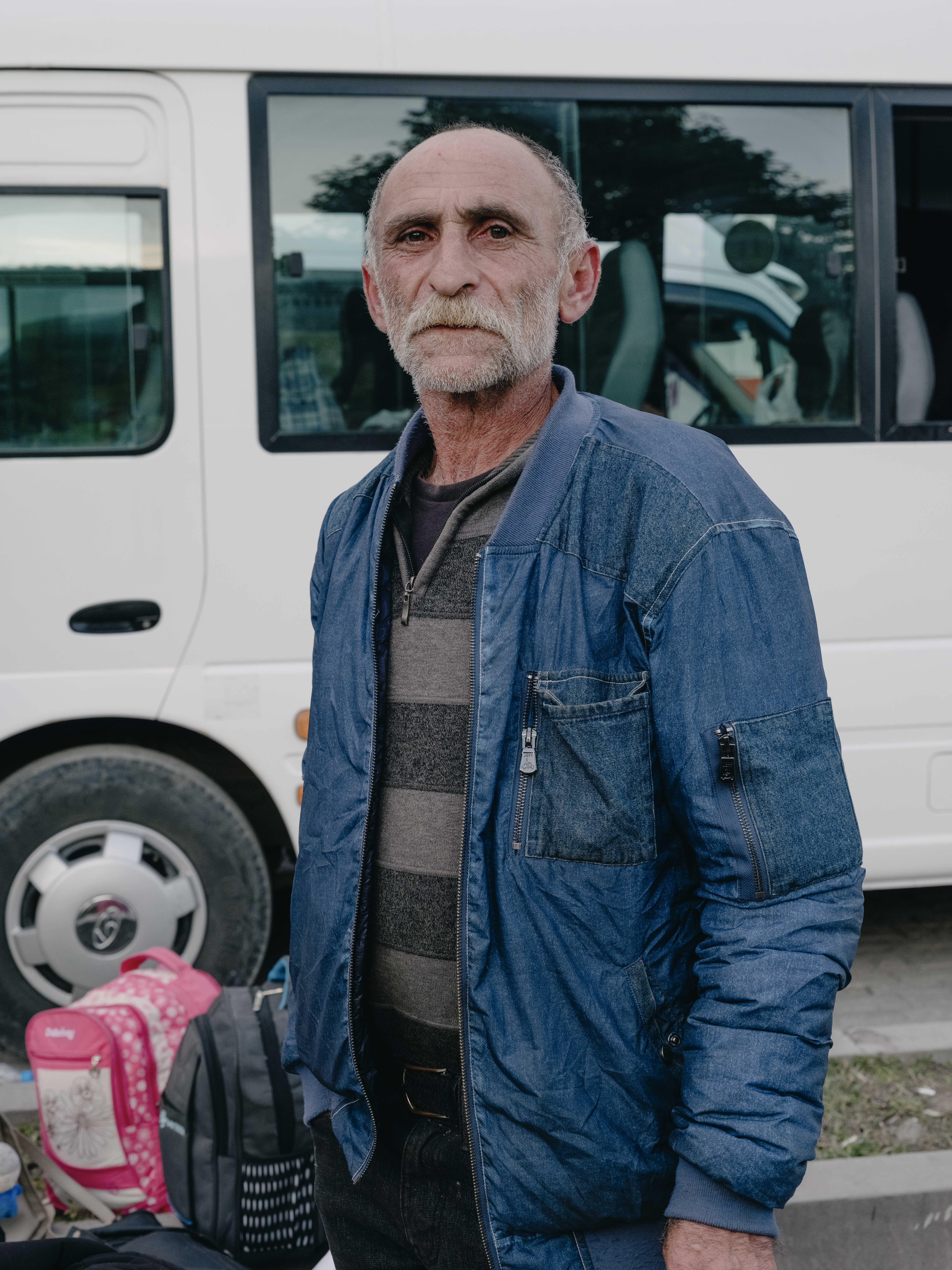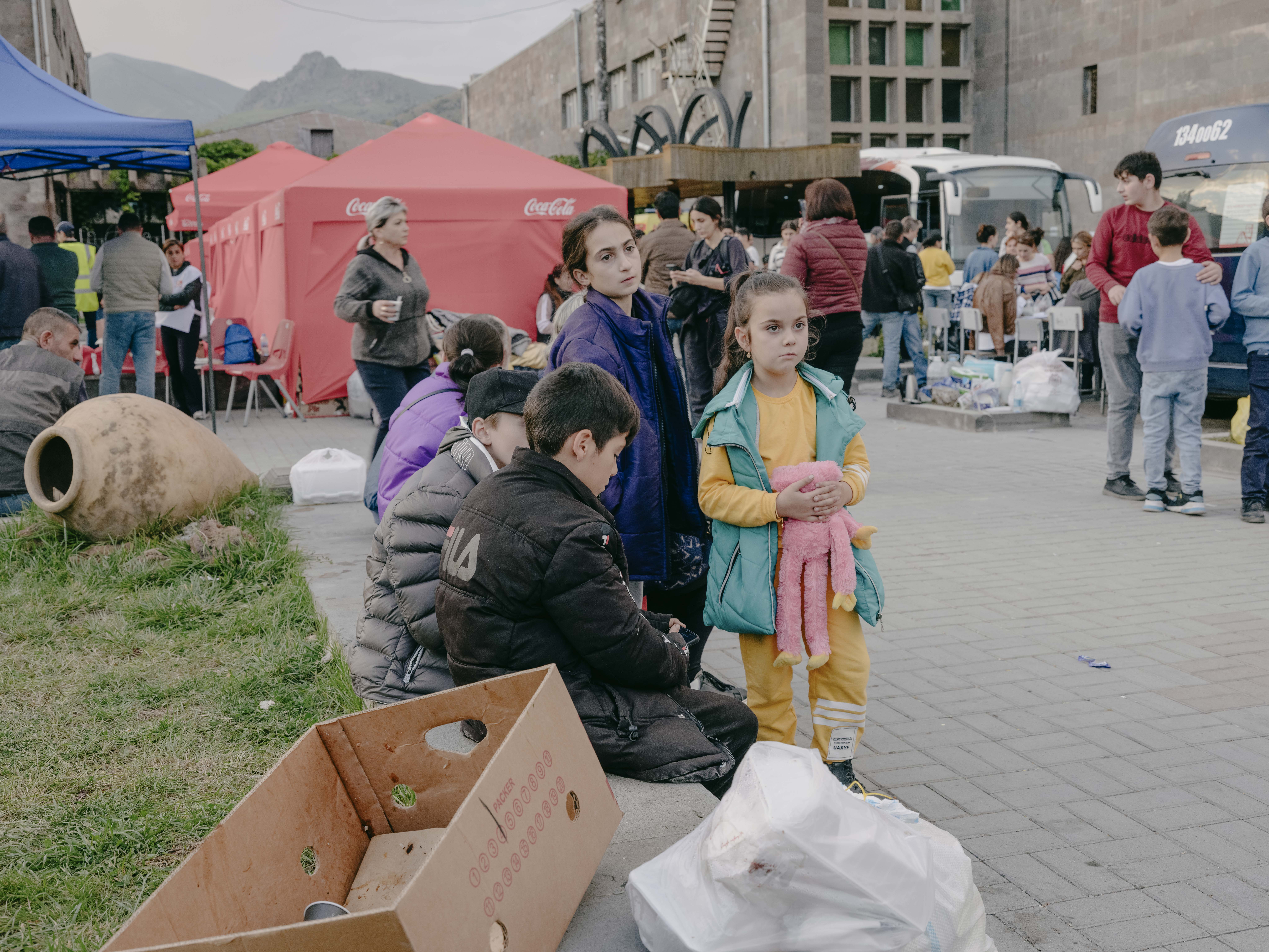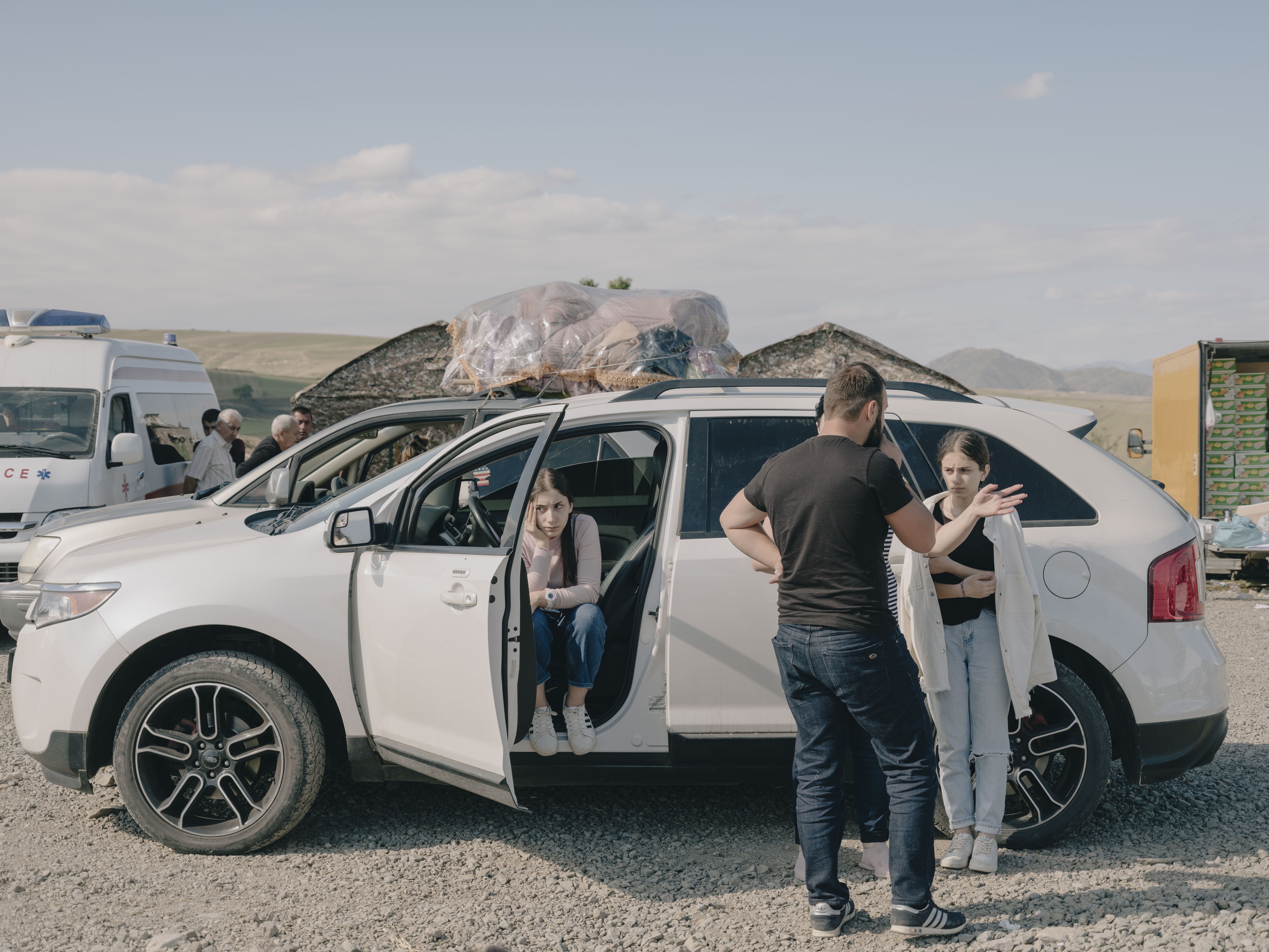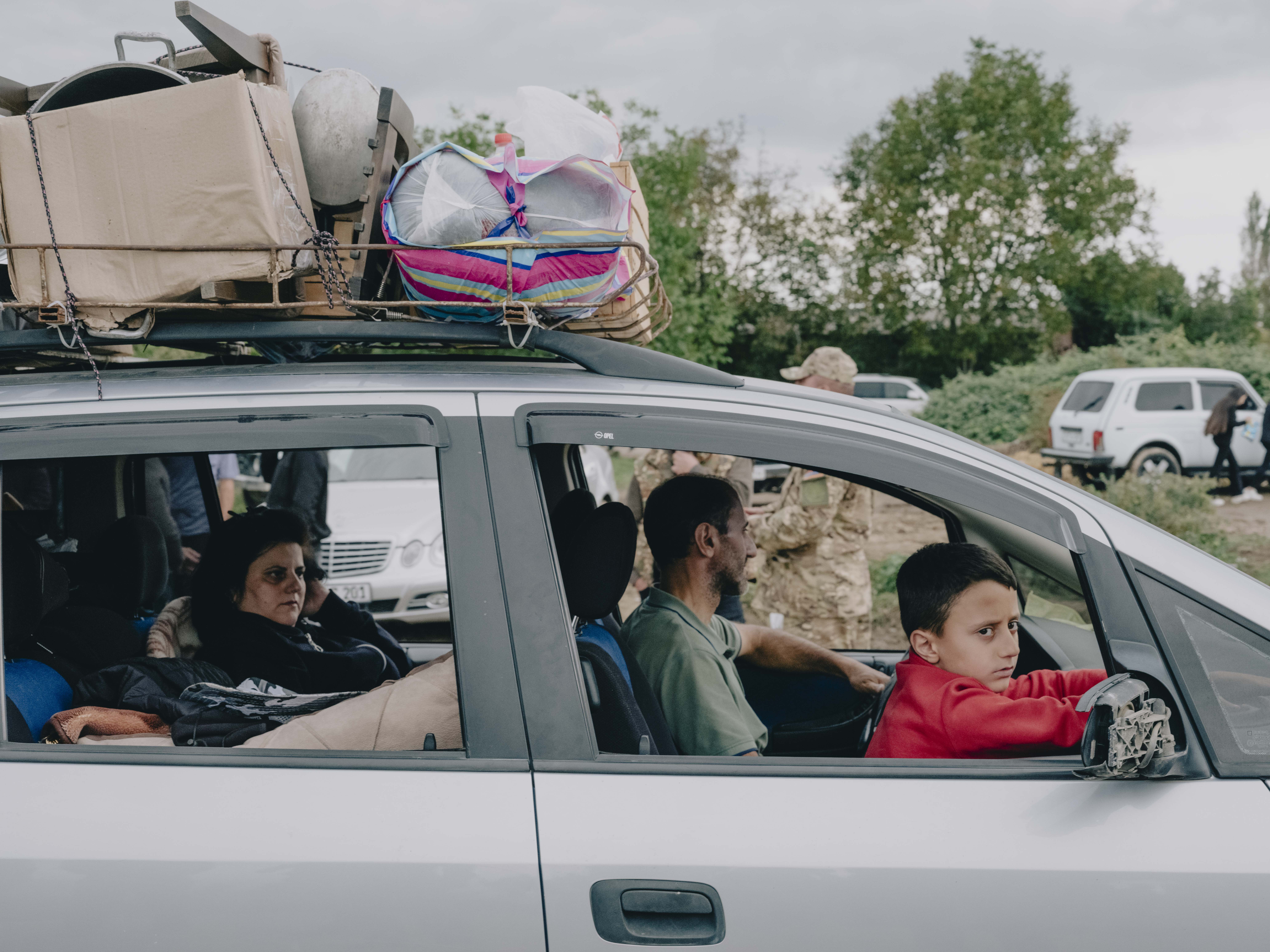All images © Rebecca Topakian
Rebecca Topakian watched on alongside Russian soldiers as Nagorno-Karabakh was absorbed into Azerbaijan
In September 2020, an Azerbaijani offensive in the contested Nagorno-Karabakh region reignited a decades-long conflict with Armenia. Since the first war in the early 1990s, the enclave – which is situated in south-western Azerbaijan – had been governed as an Armenian republic, continuing hundreds of years of Armenian ethnic habitation. The second war lasted six weeks and redrew the map of Nagorno-Karabakh, Armenians losing nearly three-quarters of their territory and suffering over 4000 casualties. Following a ceasefire, Azerbaijan declared victory and was backed by Turkey, as in the earlier conflict. It was an ominous sign for the remaining Armenians.
At the time of the war, French-Armenian photographer Rebecca Topakian was living in Paris, working on a project about her family history. Dame Gulizar and Other Love Stories combines family archives with new prints of Armenian mountain stones, emphasising “the strong link between bodies and the landscape,” Topakian says. But when fighting broke out, she was confronted with her identity in a starker fashion. “Before, I was peacefully French-Armenian,” she explains, “But during the war I felt a big disconnection with my French friends. Nobody understood what I was going through – people were calling me dramatic.”


“It was very hard to work as a photographer documenting people in distress, especially when they are your own people, because you don’t have that distance”
Topakian organised a print sale to fundraise for victims and became active on social media; a torrent of abuse and propaganda followed, much of it in the form of graphic images of suffering Armenians. She later incorporated these images into a piece she titled Vordan Karmir, a collaborative textile work in which she ‘glitched’ the gory pictures. “Making the images unrecognisable took away their traumatic power,” she explains.
A period of personal upheaval followed. Topakian began deepening her connection to Armenia, taking citizenship, learning the language, and buying an apartment in the capital, Yerevan. With her friend Astrig Agopian, a French-Armenian journalist and photographer, she pledged that if war broke out in Nagorno-Karabakh again, they would travel to witness it first-hand.
In December 2022 Azerbaijan implemented a blockade of the enclave, and the risk of a complete ethnic cleansing of Armenians became clear – though few alarms were raised in the international media. By September 2023, a one-day Azerbaijani offensive led the Armenian-Artsakh administration to surrender. A decree dissolving all Armenian state institutions in Nagorno-Karabakh swiftly followed. Russian peacekeepers were brought in to oversee a population transfer in which all Armenians left and, after 35 years of on-off conflict – and roughly 2000 years of continuous Armenian presence – Nagorno-Karabakh was reimagined as a complete ethnic and national part of Azerbaijan.

“I couldn’t just ignore what’s happening – a war, an ethnic cleansing,” Topakian recalls. “It’s the issues that I work on and at the same time it affects me as a person.” She travelled to the border village of Kornidzor and nearby city Goris, photographing the beleaguered Armenian population as they left their homes. The images, provisionally titled Artsakh: Chronicle of Violence, show worried families stalled by fuel shortages and Russian soldiers lingering at checkpoints, poignantly framed by the Nagorno-Karabakh hills.
“It was very hard to work as a photographer documenting people in distress, especially when they are your own people, because you don’t have that distance,” Topakian says. “I needed to show that people were in despair, but I felt a bit guilty in these moments of vulnerability.” She points to the deep connection the Armenian people had with the land; many took their plants with them, and women hoped aloud that settling Azerbaijanis would look after their crops and gardens. “There’s a very poetic link to the mountains and the flowers and the trees,” she says.

One image shows a man lying in a hospital bed, where he spent just 24 hours following three strokes before being evacuated. Another photograph portrays a group of young children – one girl’s father had left to collect gas but, following an explosion, had not returned. Another man decided to take her with his own kids. The chaos of the migration is numbed by a profound sense of loss, people staring longingly into the distance from packed cars, families gripping each other tightly. “When people arrived at the border they were crying,” Topakian says. “They realised that this land was lost forever – that they would never see it again.”
Topakian shifted her approach from her fine art practice, asking for her subjects’ permission and following up with them for news, but opting to be “far less creative, in the sense that I wanted to disappear as an author”. Even so, she skipped the detached, long-lens shots taken by many foreign photojournalists. Instead she stayed close to her people, documenting the human chapters of a largely ignored story. “Normally I don’t believe in photojournalism,” Topakian reflects. “I don’t think it changes anything; it’s more for the future. But if, in 100 years, people research ethnic cleansing and there are photographs documenting it, then that is worth something.”

